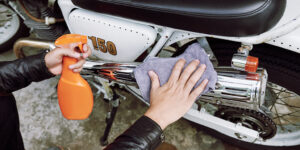Life insurance Anderson SC pays named beneficiaries when the person covered dies. Typically, these are spouses, children, or parents. However, the beneficiaries can be anyone who has an insurable interest.
Many factors influence life insurance rates. These include your health and lifestyle. Consider your family’s budget and current expenses.

Life insurance’s main purpose is to provide beneficiaries a death benefit upon the policyholder’s death. The death benefit can help families pay for funeral expenses and other end-of-life costs. In addition, life insurance can be used to pay off debts, such as mortgages and other loans.
The amount of coverage you need depends on your family’s circumstances and goals. To determine the right coverage amount, consider all of your income replacement needs and any other expenses that your family would have to pay in your absence. You should also take into account your current debts and other savings.
There are several types of life insurance policies, each with its own benefits and drawbacks. Term life insurance provides affordable and convenient coverage for a specific period of time, typically one to 30 years. It can be converted to permanent insurance at the end of its term. Permanent insurance is more expensive than term insurance, but it offers a death benefit and a cash value component that grows tax deferred.
Some life insurance policies include what is known as a suicide clause, which voids the policy if the insured commits suicide within a certain period of time, usually two years, after opening the policy. In addition, some life insurance policies may deny claims if the insured dies while engaging in high-risk activities, such as skydiving. To avoid these pitfalls, always carefully read your policy contract and speak to an agent or company representative about your options.
Many people choose life insurance to help cover their debts and other expenses in the event of their death. Others take it out to replace a spouse’s income or provide an inheritance for loved ones. Finally, some people buy final expense insurance (also known as burial insurance) to pay for their funeral and other expenses. In addition, the proceeds from a life insurance policy can be used to offset tax obligations.
Some policies have riders, which allow you to customize your policy and get additional coverage in unique situations. For example, an accelerated death benefit rider allows you to use part of the death benefits before your death to pay for medical treatment. A disability income rider pays a monthly stipend if you’re unable to work due to a disability. Another popular rider is a critical illness rider, which provides a lump sum for a specified number of illnesses.
The death benefit from a life insurance policy is typically passed along without federal income taxes. However, the beneficiaries may be required to pay estate and inheritance taxes. This is because the proceeds from the policy are considered reimbursement for a loss, rather than income. A death benefit from a life insurance policy is also generally exempt from legal attachment, garnishment and other types of restraining orders. Nevertheless, the death benefit is not guaranteed and depends on your health and other factors.
Life insurance riders are a great way to customize your policy and meet your specific needs. They can add coverage to family members, increase your death benefit, or help pay for premiums in the event of an accident. However, they may also raise your premiums. Therefore, it is important to understand the different types of riders available before deciding which one is right for you.
Some riders are included in your base policy, while others cost additional money and require you to meet certain criteria. For example, a critical illness rider lets you access a portion of your death benefit while still alive. This money can be used for medical expenses, long-term care services, or to enhance your quality of life. The amount paid will be subtracted from the total death benefit when you die, so it is important to understand this before purchasing it.
Other riders include a spousal rider, which pays out a payout to your spouse in the event of your death. This is a good option for some people, but it may not provide as much protection as a separate life insurance policy. The final decision on whether or not to purchase life insurance riders is a personal one that should be made with the help of an industry professional. The best life insurance provider will offer a variety of options to fit your unique lifestyle.
Some life insurance policies offer a cash value feature, which is money that you can withdraw or borrow while you’re alive. The cash value in a permanent policy accumulates over time and can be used for many purposes, including covering premiums or generating additional retirement income. However, there are some important considerations when using this feature. It’s important to discuss this with your financial advisor and consider the tax implications before making any changes to your policy.
The cash value of a permanent life insurance policy may grow through a combination of interest earnings, dividends, and investments. The amount you receive from the cash value depends on the type of policy and how much you’ve paid in premiums. The growth in your account may also be subject to market fluctuations, just like any other investment.
Typically, the money you withdraw from your cash value is not subject to taxes unless it exceeds the amount of money you’ve paid into the policy. However, you must be careful when using this feature, as loan interest and withdrawals can decrease the death benefit. If you don’t pay back a loan, your insurer will deduct the balance from your death benefit and may even cancel or lapse your policy.
Depending on the type of policy, you might be able to use your cash value to cover your premiums, which can be an attractive option for people who don’t have other savings available. However, this strategy can be complicated and it’s best to consult with a financial professional before making any changes to your life insurance policy.
Policy loans are a convenient way to access some of the money in your life insurance policy. They don’t require a credit check and typically offer lower interest rates than personal loans or credit cards. You can use the money for any purpose, from paying bills to going on vacation. However, it’s important to pay the loan back on time. If you don’t, the amount you owe will increase each year and your policy could lapse. This will cause you to owe income tax on the amount borrowed, and your beneficiaries may receive less than they would have if the policy was in force.
You can typically apply for a policy loan online, although some companies may require you to fill out a paper form. Your insurance agent should be able to help you with the process. The minimum amount required to borrow against your life insurance policy varies by insurer.
It’s important to understand the implications of taking a life insurance loan. If you take out a loan and don’t repay it, the death benefit will be used to pay back the debt. This can be a costly mistake, especially for young families who need the benefits of their policy to cover burial and other final expenses. It’s also important to remember that policy loans aren’t a permanent solution. They’re often deferred, and you may be subject to a change in the policy’s dividend rate or investment climate.
Canceling life insurance is a major decision that can have significant financial implications. Many consumers choose to cancel their policies due to changing personal and financial circumstances. They may also want to save or invest the money they would otherwise spend on premiums. Depending on the type of policy and insurer, these changes are usually permitted. The process of cancelling a life insurance policy varies from insurer to insurer, so it is important to speak with an agent before making a decision. Some policies have a free-look period that lets policyholders try out a replacement policy before they cancel their original coverage.
If you are thinking of canceling your life insurance policy, it is important to consider how this will affect your family and beneficiaries. You should also make sure you have other financial plans in place that will protect them in case something happens to you.
For example, you might need to cut back on expenses because of layoffs or rising costs of living. In this case, you can use a policy with a cash value account to pay for your premiums until you can afford to increase your coverage.
Other options include reducing the death benefit, suspending payments, or converting to a different type of life insurance. Alternatively, you can sell your policy for a lump sum of cash. This can help you meet financial goals or get rid of debt, such as a mortgage.


